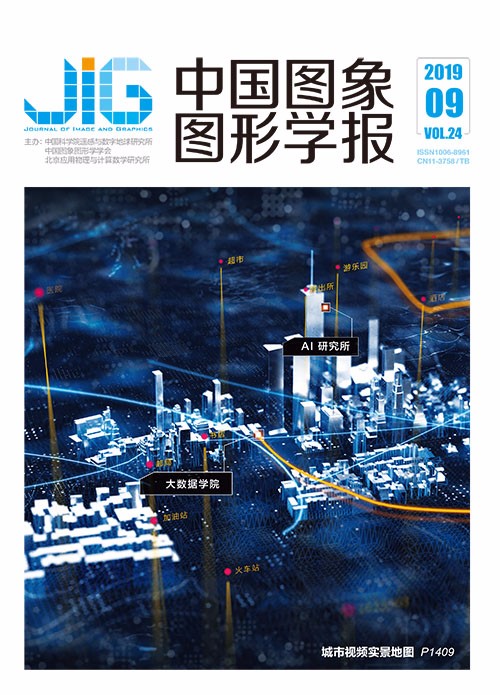
高填方渠道坡面破损的多尺度特征提取
刘明堂1,2, 王丽1, 张来胜3, 秦泽宁1, 刘佳琪1, 陈健1(1.华北水利水电大学信息工程学院, 郑州 450045;2.中原经济区水资源高效利用与保障工程河南省协同创新中心, 郑州 450045;3.郑州市人力资源和社会保障数据管理中心, 郑州 450052) 摘 要
目的 高填方渠段渗漏监测技术是南水北调工程安全监测的关键技术之一。针对目前高填方渠道渗漏检测易受环境干扰导致判断结果不准确的问题,设计了基于Gabor-SVM(support vector machine)的南水北调中线工程高填方渠道水泥坡面破损识别模型。方法 首先对高填方渠道水泥渠面图像进行预处理;然后研究Gabor小波的多方向/尺度选择特性,对提取的水泥坡面图像特征进行分析,寻找最佳尺度/方向参数组;最后根据训练好的样本特征,用SVM进行水泥坡面破损等级的分类处理,将破损类别划分为正常、裂缝、孔洞及破碎4种。在相同环境下,将Gabor-SVM与直方图-SVM、灰度共生矩阵-SVM、Canny边缘检测算法-SVM的破损识别进行比较分析。结果 基于Gabor-SVM的水泥面破损识别方法在小波取6/12参数时,整体识别结果最佳,其中正常、裂缝、孔洞、破碎的识别率分别为98%、63%、88%、90%,平均识别率约为85%,相比其他几种方法的平均识别率(约50%),Gabor-SVM方法具有更好的识别能力。结论 基于Gabor-SVM的水泥渠面破损识别模型有一定的识别效果,但对裂缝类别的高填方水泥坡面识别效果不理想,还需要进一步深入研究,以期为查找南水北调高填方渠道渗漏隐患提供技术支持。
关键词
Multi-scale feature extraction of slope damage in high fill channels
Liu Mingtang1,2, Wang Li1, Zhang Laisheng3, Qin Zening1, Liu Jiaqi1, Chen Jian1(1.Department of Information Engineering, North China University of Water Conservancy and Electric Power, Zhengzhou 450045, China;2.Collaborative Innovation Center of Water Resources Efficient Utilization and Support Engineering, Zhengzhou 450045, China;3.Zhengzhou Human Resources and Social Security Data Management Center, Zhengzhou 450052, China) Abstract
Objective The leakage monitoring technology of high fill channels is key to the safe monitoring of the South-to-North Water Transfer Project. Aimed at addressing the current problem of leakage detection for high fill channels being easily affected by the environment and resulting in inaccurate judgment results, a model based on Gabor-support vector machine (SVM) is designed for damage monitoring in the cement slope of the high fill channel in the middle route of the South-to-North Water Transfer Project. The high fill channel is widely distributed in the middle route of the South-to-North Water Transfer Project. As a result of the high filling height, wide distribution range, and complex engineering geological conditions of the middle route of the South-to-North Water Transfer Project, the lining panel is cracked, the canal slope surface is damaged, and seepage occurs. Although the effect of leakage is small, the long channel still leads to a large leakage. Therefore, monitoring the seepage of the high fill channel is necessary to ensure its safe operation. Method The image of the high fill channel cement is preprocessed. In general, because the acquired image is affected by various noises, it needs to be preprocessed before extracting its features. These processing methods include image enhancement, median filtering, and grayscale processing. Then, Gabor wavelet is used to extract the texture features of the image, as well as the image convolution, commonly used amplitude, and phase to represent the texture features. The amplitude information reflects the energy spectrum of the image and is relatively stable. Therefore, amplitude information is selected as the extracted characteristic data. After analyzing the mean and variance eigenvalues of the amplitude, the image features of the variance are linearly separable. Therefore, the variance characteristic data of amplitude are considered as the characteristic data for classification and recognition. Under the scale and direction of different Gabor wavelets, the image characteristics of the extracted cement slope are analyzed to find the optimal scale and direction parameter group. The scale range is 17, and the direction range is 113. Different Gabor filters are obtained according to different directions and scales. Different Gabor filters are used to filter the high fill cement slope and thereby obtain different image features. Finally, according to the well-trained sample features, SVM is used to classify the damage degrees of cement slope, and the recognition results are refined with the following labels:normal, crack, fracture, and hole. At the same time, various feature extraction methods are studied to objectively reflect the recognition effects of Gabor-SVM. These methods include histogram-SVM, grayscale symbiosis matrix-SVM, and Canny edge detection algorithm-SVM. Result Experimental results show that the damage recognition model of the cement surface based on Gabor-SVM tends to have a stable value when the small wave has the 6th scales and the 12th directions. The recognition rate of the normal slope image is generally good and stable, mostly distributed between 0.8 and 1.0. The recognition rate of the slope image under the crack category presents stable growth from low to high, but the overall recognition rate is low, with most values being in the range of 0.500.65. The recognition rate of the slope image of the hole type fluctuates greatly, and its recognition rate has a significant relationship with scale changes. For example, when the scale value is 1 or 2, the recognition rate is low. When the scale value is 3, 4, or 5, the recognition rate increases gradually. When the scale value is 6 or 7, the recognition rate decreases. The recognition rate is mostly distributed between 0.78 and 0.88. A certain relationship exists between the size of the slope image recognition rate of the fracture category and the scale. It has the characteristic of fluctuating growth from low to high and then to low, and the recognition rate is generally between 0.80 and 0.95. The normal, crack, hole, and fracture recognition rates are 0.98, 0.63, 0.88, and 0.90, respectively. The average recognition rate of the Gabor-SVM method is approximately 0.85. Compared with the average recognition rates of the other methods (approximately 0.50), that of the proposed method has better recognition ability. Conclusion The damage recognition model based on Gabor-SVM has a slight recognition effect. The recognition effect peaks given 6 scales/12 directions. The average recognition rate of the Gabor-SVM method for the slope of the high fill channel cement is approximately 0.85. Meanwhile, the cement surface recognition effect of the crack category is unsatisfactory at 0.63. Thus, further research is required to provide technical support for finding the hidden dangers of high fill channels in the South-to-North Water Transfer Project.
Keywords
middle route of South-to-North Water Transfer Project feature extraction of multiple scales and directions damage recognition Gabor wavelet support vector machine (SVM) classification
|



 中国图象图形学报 │ 京ICP备05080539号-4 │ 本系统由
中国图象图形学报 │ 京ICP备05080539号-4 │ 本系统由